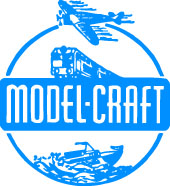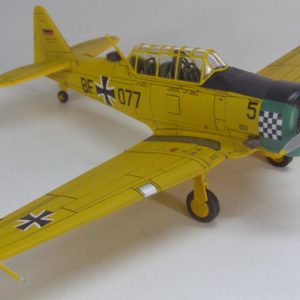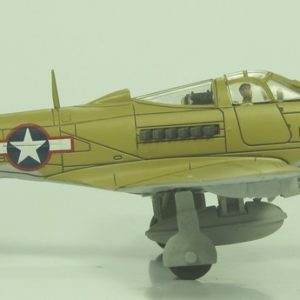Features
- Diecast construction
- Spinning propeller
- Interchangeable landing gear
- Accurate markings and insignia
- Comes with display stand
Historical Account: “Lift My Soul Unto Heaven” – The Royal Naval Air Service (RNAS) was first established in January 1914 under the Air Department of the Admiralty. By the outbreak of the First World War in August, it had more aircraft under its control than the Army’s Royal Flying Corps (RFC). The main roles of the RNAS were fleet reconnaissance, patrolling coasts for enemy ships and submarines, attacking enemy coastal territory and defending Britain from enemy air-raids. In April 1918 the RNAS, which at this time had 67,000 officers and men, 2,949 aircraft, 103 airships and 126 coastal stations, was merged with the RFC to form the Royal Air Force.
In 1937, the Naval Air Branch was returned to Admiralty control under the Inskip Award, and soon renamed the Fleet Air Arm. At the onset of the Second World War, the Fleet Air Arm consisted of 20 Squadrons with only 232 aircraft. By the end of the war the strength of the Fleet Air Arm was: 59 aircraft carriers, 3,700 aircraft, 72,000 officers and men and 56 air stations all over the world. The aircraft carrier had replaced the battleship as the Fleet’s capital ship and its aircraft were now strike weapons in their own right.
General Carl Spaatz, Commander of the US 8th Army Air Force, after WWII
The F6F embodied the early lessons learned by users of Grumman’s previous fleet-defense fighter, the Wildcat. In June 1941, Grumman lowered the wing center section to enable the undercarriage to be wider splayed, fitting more armor-plating around the cockpit to protect the pilot while also increasing the fighter’s ammunition capacity. When the prototype made its first flight, it was realized that a more powerful engine was needed to give the fighter a combat edge. A Pratt & Whitney R-2800-10 engine was installed for added power.
The aircraft made its combat debut in August 1943, and from that point on, the question of aerial supremacy in the Pacific was never in doubt. Hellcats served aboard most of the US Navy’s fleet carriers, being credited with the destruction of 4,947 aircraft up to V-J Day. The Fleet Air Arm was also a great believer in the Hellcat, procuring almost 1,200 planes between 1943-45. The Hellcat saw only limited service in the post-war years, being replaced by the more powerful F9F Bearcat. Of the nine F6Fs believed to be airworthy today, seven are based in the USA and two are located in the UK.
Dimensions:
Wingspan: 5-inches
Length: 5-inches





